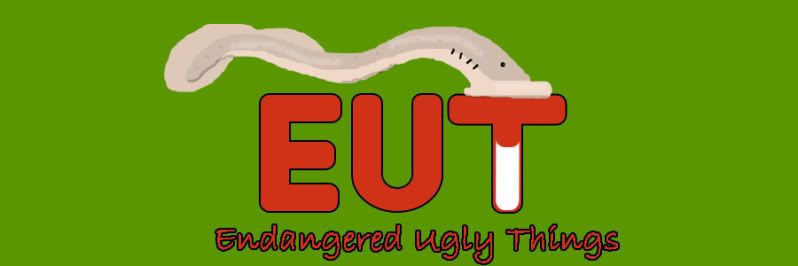 |
| Image from Cook Islands Natural Heritage Trust3 |
Why is it so beefy? Well, anyone who has tried to open a coconut with simple tools can answer that. This is not an easy fruit to get into. The Crab will strip the outer husk near the germination pores (those things that make a coconut look like a bowling ball). It will then use one of its legs to punch a hole through the inner husk, and break the coconut apart. Once again, ARKive provides us with wonderful footage of this in action.
Mating occurs quickly and on land, and the female carries the eggs under her abdomen. She then drops those into the ocean, where they hatch into marine larvae that look something like shrimp. Coconut Crabs are closely related to the Terrestrial Hermit Crabs you'd see in pet stores, and the young will find snail shells to protect their soft rear-end. As they grow larger, their abdomen grows a thick carapace, so they lose the need to find snails. Good thing, too, considering their size. They also become fully terrestrial, though they can still drink seawater.
Coconut Crabs are found dispersed throughout islands in the South Pacific. Being a huge crab, no one would be surprised that they're hunted for food. Being an island species also means invasive species like rats, pigs, and ants are a problem for the juveniles. As the islands get more populated, habitat destruction is a problem as people encroach on the beaches. As population estimates vary from island to island depending on the number of people there, the IUCN lists the Coconut Crab as Data Deficient.
Conservation varies from island to island as well. Some places set hunting limits, while others have set up breeding programs. More research needs to be done to really find out how to help these huge creepy-crawlies out.
1The fact that weight is pretty much meaningless in the ocean leads to some pretty big invertebrates down there. The Japanese Spider Crab2(Macrocheira kaempferi) with a 13 foot legspan wins as the largest arthropod, while the Colossal Squid (Mesonychoteuthis hamiltoni) puts all other invertebrates to shame with a body length of 33 feet.
2You can't tell me that picture doesn't look like a video game boss.
3The image that many of you were expecting to see was probably this one, which I would have used if I could have found an original source.

5 comments:
The picture you used is prettier and more colorful than the trash can coconut crab picture.
A hermit crab on steroids...
Hey, how about this guy for a post: the coelacanth. I just read a bit about it in this month's Smithsonian and found this cool webpage: dinofish.com
Also found out I was pronouncing it completely wrong...
Just wanted to say I've been a fan of your blog since I discovered it last spring. I hope you have a chance to write more soon.
It does look pretty creepy but the colors on it are awesome.
Hey, how about this guy for a post: the coelacanth. I just read a bit about it in this month's Smithsonian and found this cool webpage: dinofish.com
Also found out I was pronouncing it completely wrong..
Post a Comment